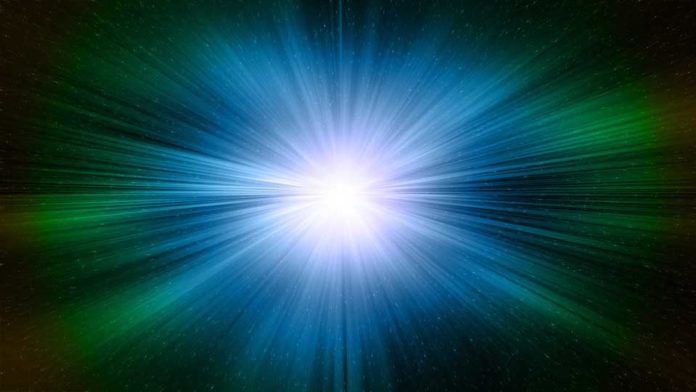Light-speed is the fastest that any material object can travel through space. The speed of light in a vacuum is 186,282 miles per second (299,792 kilometers per second). Undoubtedly, this is incredibly fast, but, it is frustratingly slow while communicating with or reaching other planets (beyond our solar system).
To depict the speed limit of the cosmos in a way anyone could understand, James O’Donoghue, a planetary scientist at NASA‘s Goddard Space Flight Center, took it upon himself to animate it.
His efforts look at 3 different light-speed scenarios to express how fast (and painfully slow) photons can be.
His first animation shows how fast light moves to Earth.
Earth is 24,901 miles around at its center. If our world had no atmosphere (air refracts and slows down light a little bit), a photon skimming along its surface could lap the equator nearly 7.5 times every second.
In this animation, the speed of light appears to be quite fast-, however, the film likewise demonstrates how finite it is.
In his 2nd animation, he covers the distance from Earth to the Moon.
The average distance between the Earth and the Moon is 238,855 miles (384,400 kilometers). It means, all moonlight that appears is 1.255 seconds old and Earth-moon round-trip at light-speed takes about 2.51 seconds.
This timing, he suggests, is growing every day as the moon is drifting farther from Earth at a rate of about 1.5 inches (3.8 centimeters) every year.
O’Donoghue‘s third speed-of-light animation outlines the challenge that numerous astronomers used to manage on daily basis.
When NASA tries to communicate with spacecraft, such as the InSight probe on Mars, it can only do so at the speed of light. This is much too slow to operate a spacecraft in “live mode” as you would a remote-control car. So commands must be carefully thought out, pre-packaged, and aimed at the precise location in space at the precise time so that they don’t miss their target.
As that 60-second clip appears, light takes 3 minutes 2 seconds to go among Earth and Mars at the nearest approach. That is 6 minutes and 4 seconds for a light-speed round-trip.
Means the light’s finite speed gets depressing while communicating with spacecraft like New Horizons, Voyager1 and 2. It suggests it gets more frustrating when it comes to going outside the solar system.
Though, space is incredibly vast. Its observable edge begins about 45.34 billion light-years away in any direction (and 13.77 billion years in the past), which is far too big to illustrate in a simple animation.
O’Donoghue said he only recently learned how to create these animations – his first was for a NASA news release about Saturn’s vanishing rings. After that, he moved on to animating other difficult-to-grasp space concepts, including a video illustrating the rotation speeds and sizes of the planets. He said that one “garnered millions of views” when he posted it to Twitter.
